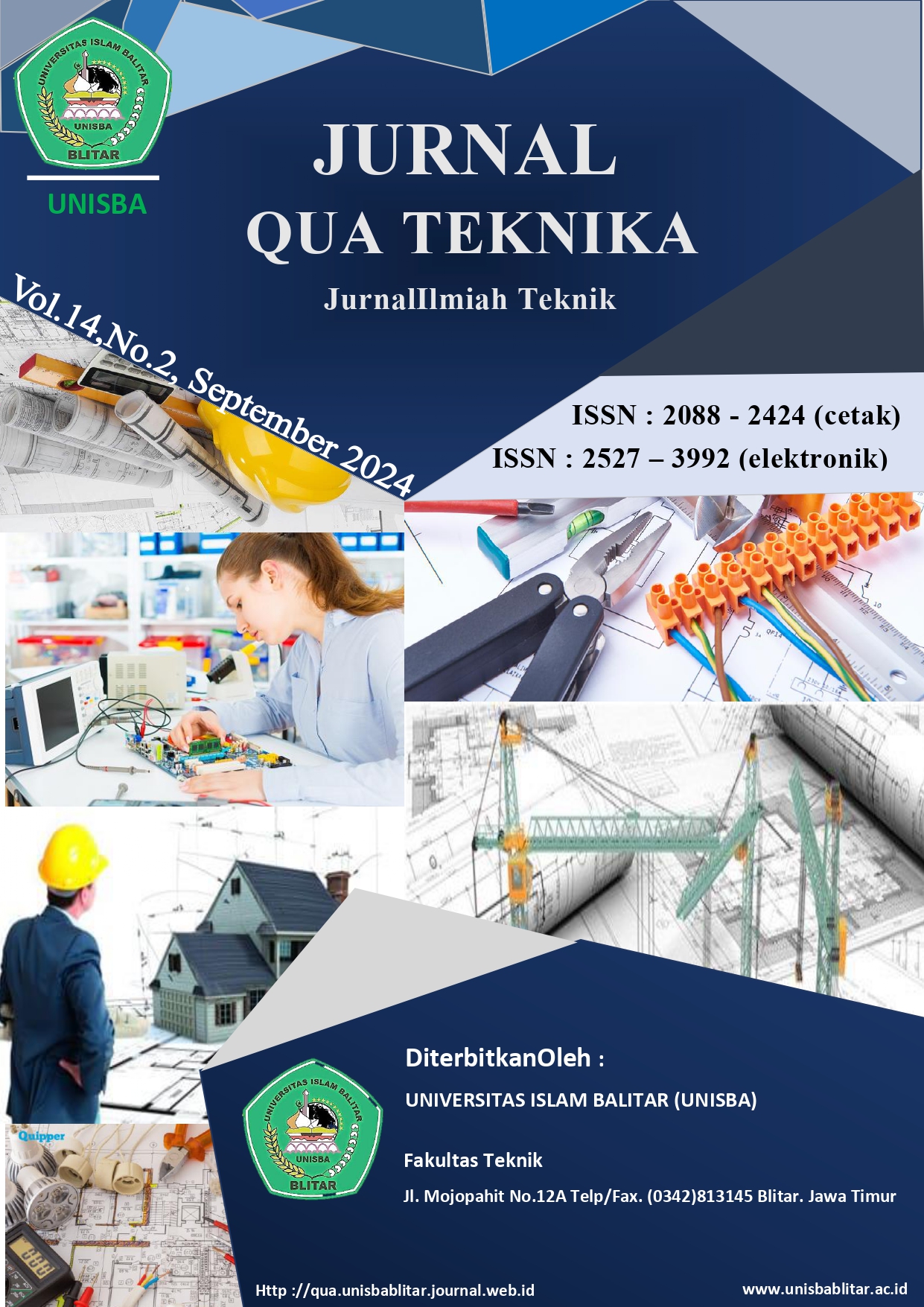ALAT PAKAN IKAN KONTROL JARAK JAUH PADA AQUARIUM MENGGUNAKAN INFORMASI APLIKASI TELEGRAM BERBASIS ARDUINO
Pentingnya memberi pakan ikan tepat waktu
DOI:
https://doi.org/10.35457/quateknika.v14i02.4036Keywords:
Pakan ikan aquarium otomatisAbstract
The use of technology in the fisheries sector has shown great potential to
improve efficiency and productivity. This research aims to develop and implement
an automatic fish feed device integrated with an Arduino-based Telegram
application. The system is designed to provide feed automatically according to a
specified schedule and allows remote control via Telegram application. The
research method involves designing hardware using Arduino, developing software
for control via Telegram, and testing the performance of the tool in a fish farming
environment. The results show that this automatic fish feed device is able to
provide feed in a timely manner and quantity according to the needs of the fish,
and can be efficiently controlled remotely using the Telegram application.
Functionality and reliability tests were conducted by simulation in the laboratory
as well as field tests in fish farming ponds. The data collected shows that this
system not only improves feeding efficiency, but also reduces the manual
workload of fish farmers. The conclusion of this study is that an Arduino-based
automatic fish feed device integrated with Telegram application can be an
effective solution for feeding management in fish farming. It provides significant
benefits in terms of time savings, improved operational efficiency, and remote
control capabilities. This research is expected to be the basis for further
development in the application of automation technology in the fisheries sector.
Keywords: Telegram App, Arduino, Remote Control, Operational Efficiency
References
Published
Issue
Section
License
Authors who publish with this journal agree to the following terms:
- Copyright on any article is retained by the author(s).
- Author grant the journal, right of first publication with the work simultaneously licensed under a Creative Commons Attribution License that allows others to share the work with an acknowledgement of the work’s authorship and initial publication in this journal.
- Authors are able to enter into separate, additional contractual arrangements for the non-exclusive distribution of the journal’s published version of the work (e.g., post it to an institutional repository or publish it in a book), with an acknowledgement of its initial publication in this journal.
- Authors are permitted and encouraged to post their work online (e.g., in institutional repositories or on their website) prior to and during the submission process, as it can lead to productive exchanges, as well as earlier and greater citation of published work.
- The article and any associated published material is distributed under the Creative Commons Attribution-ShareAlike 4.0 International License
Deprecated: json_decode(): Passing null to parameter #1 ($json) of type string is deprecated in /home/ejournal.unisbablitar.ac.id/public_html/plugins/generic/citations/CitationsPlugin.php on line 68










